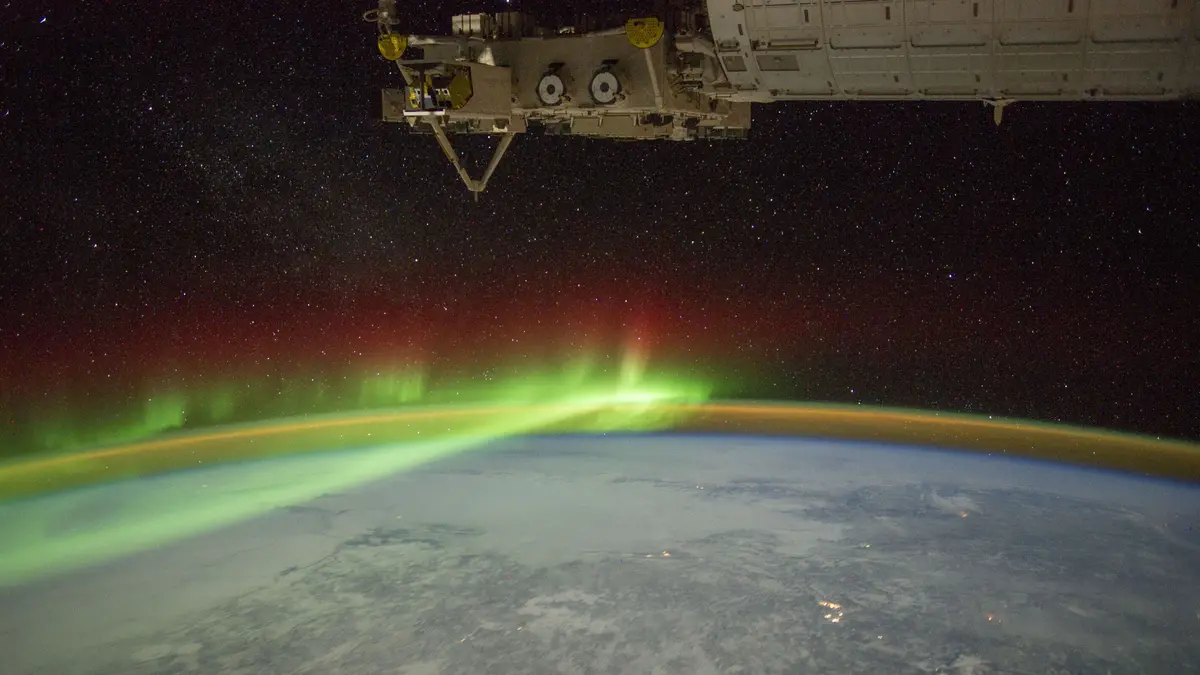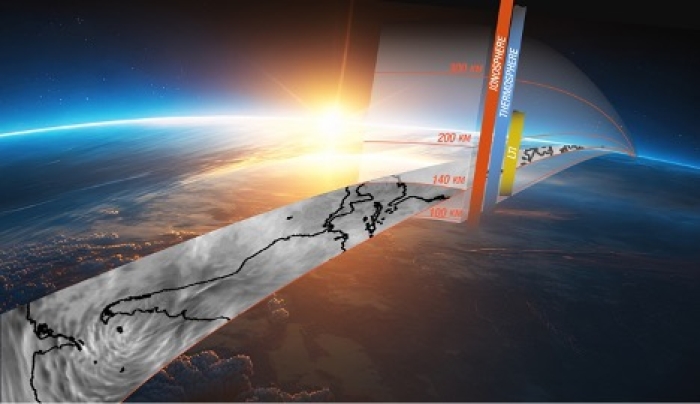ASU scientist part of NASA DYNAMIC mission proposal team to study space weather

Aurora and airglow are seen from the International Space Station in 2015. Photo credits: NASA/JSC/ESRS
A joint proposal from a team of institutions including Arizona State University has been selected for concept studies for NASA’s Dynamical Neutral Atmosphere-Ionosphere Coupling (DYNAMIC) mission.
The proposal is led by the University of Colorado, Boulder, in collaboration with ASU, Johns Hopkins Applied Physics Laboratory, NASA’s Jet Propulsion Laboratory, Clemson University, University of Alaska Fairbanks, the National Center for Atmospheric Research and the Massachusetts Institute of Technology’s Haystack Observatory.
The proposal was submitted by Principal Investigator Tomoko Matsuo of the University of Colorado, Boulder, and includes Co-Investigator Katrina Bossert, an assistant professor jointly in ASU’s School of Earth and Space Exploration and School of Mathematical and Statistical Sciences. The team is one of three winning teams selected to receive funding for a Phase-A, nine-month concept study, after which NASA will select a single winning proposal.
“This is an amazing opportunity to work with a talented group of scientists and engineers,” Bossert said. “The proposed mission instrumentation would provide measurements that allow for the study of interconnections between forcing from Earth’s atmosphere and the sun at altitudes that overlap with the satellite low Earth orbit region.”
When launched, DYNAMIC is expected to provide comprehensive measurements of the upper atmosphere in the very low Earth orbit (VLEO, below 300 km) range — the new frontier for spacecraft operation. This will provide a deeper understanding into how space weather — events generated by activity on the sun and the Earth’s weather — can interfere with satellites, navigation systems and other technology.
“We’re grateful and overjoyed for this opportunity to work together to make our vision of DYNAMIC a reality. With these measurements, we can finally gain an understanding of the critical link between Earth’s atmosphere and space,” said Matsuo, an associate professor in the Ann and H. J. Smead Department of Aerospace Engineering Sciences at the University of Colorado, Boulder.
“Earth and space are an interconnected system that reaches from the heart of our solar system, the sun, to the lowest reaches of the atmosphere where we live, and extends to the edge of our heliosphere — the boundary of interstellar space,” said Nicola Fox, associate administrator, Science Mission Directorate at NASA Headquarters in Washington, D.C.
“While space weather can spark the beautiful auroras across our skies, it also has the potential to cause disruptions for us here on Earth and can be dangerous for our spacecraft and astronauts in space. The DYNAMIC mission will expand our understanding of how Earth itself shapes space weather events that influence our home planet.”
Adapted from NASA, APL, CU Boulder release with contributions from ASU.
More Science and technology

ASU researcher on how understanding vulnerabilities to addiction could inform treatments
September is National Recovery Month, and though there are many evidence-based treatments available for substance-use disorders, they do not work for everyone. According to the National…

Theoretical computer science, real-life student success
A computer science class about the limits of technology has instead long tested the limits of students — and an Arizona State University team is working to make it more accessible and engaging.When…

When art meets science: Bringing Lucy to life
The challenge: Take just 40 small bones and conjure a life-size, lifelike recreation of one of the most important creatures in all of human history. Arizona State University’s Institute of Human…
